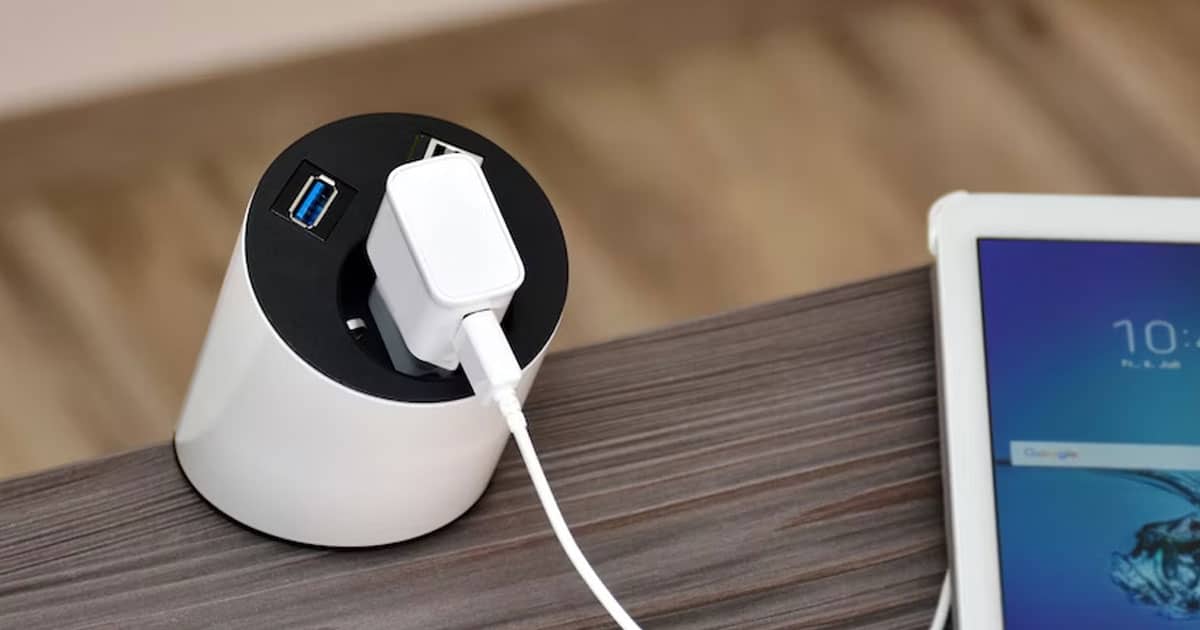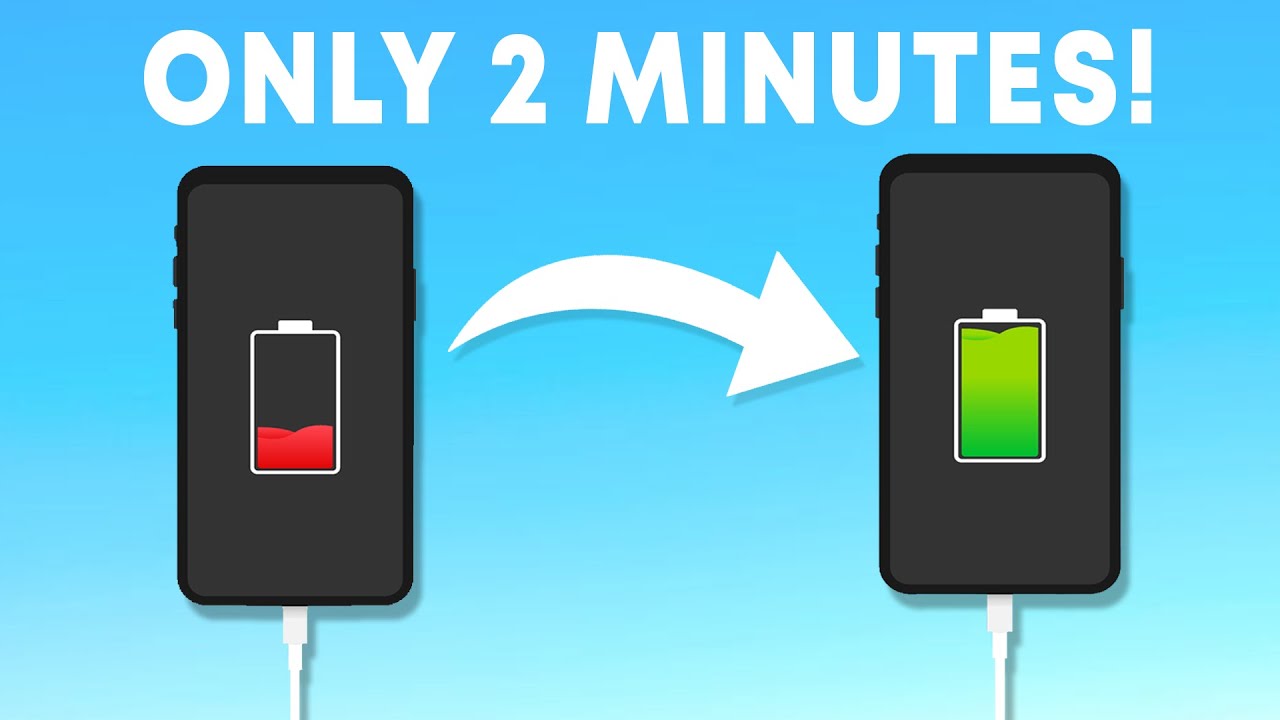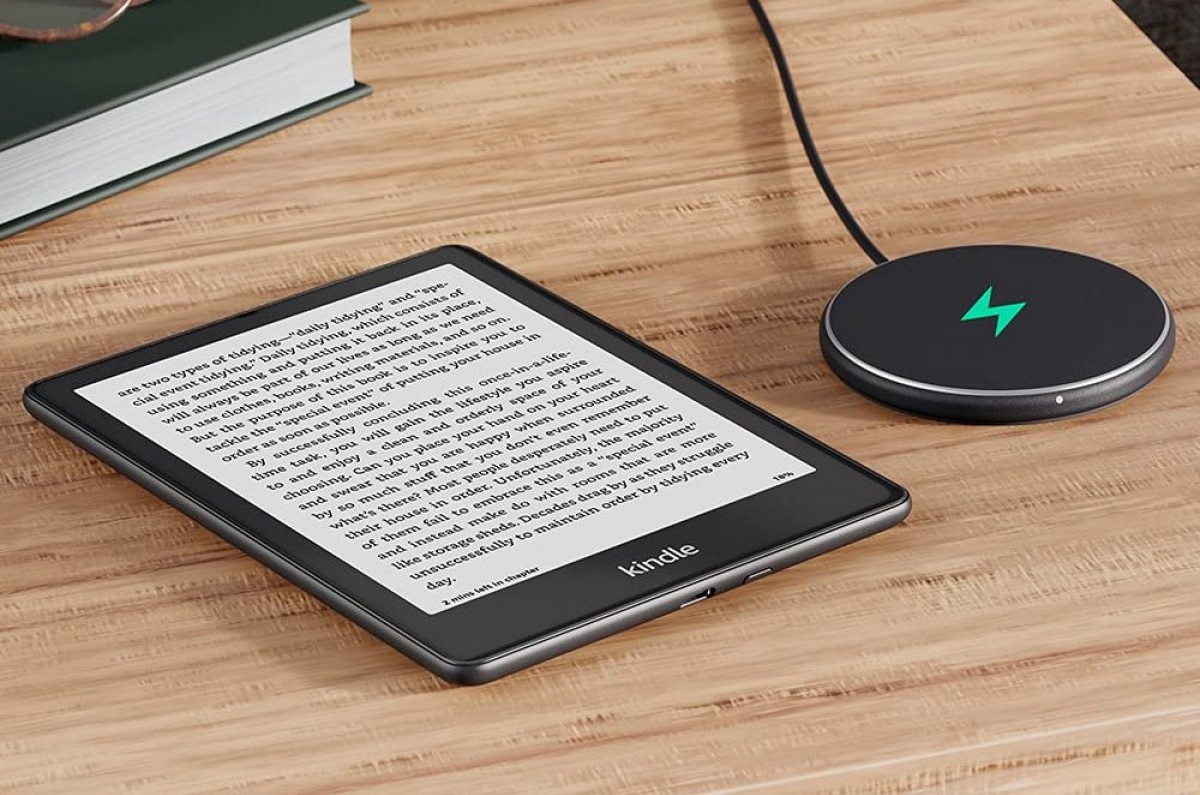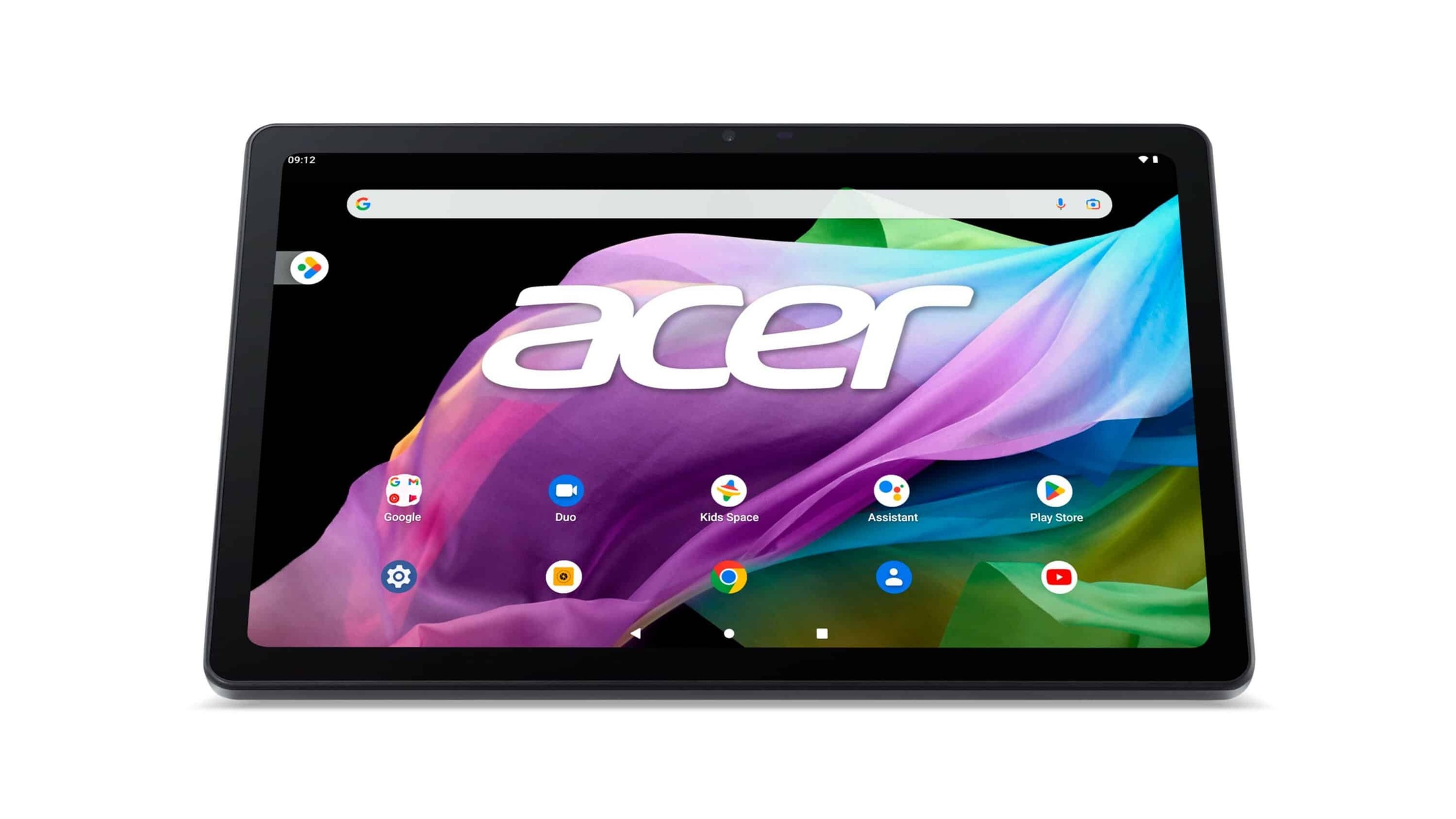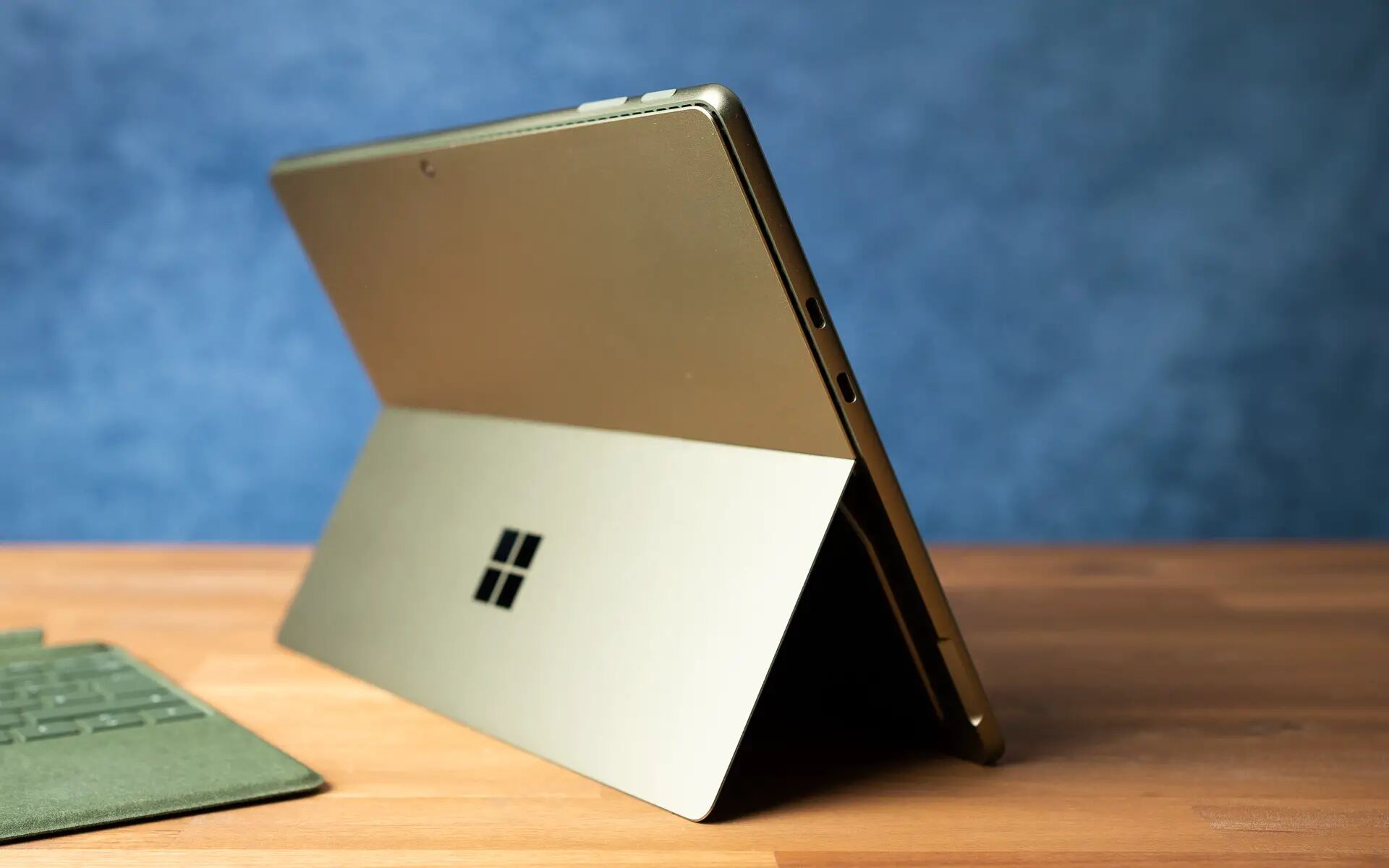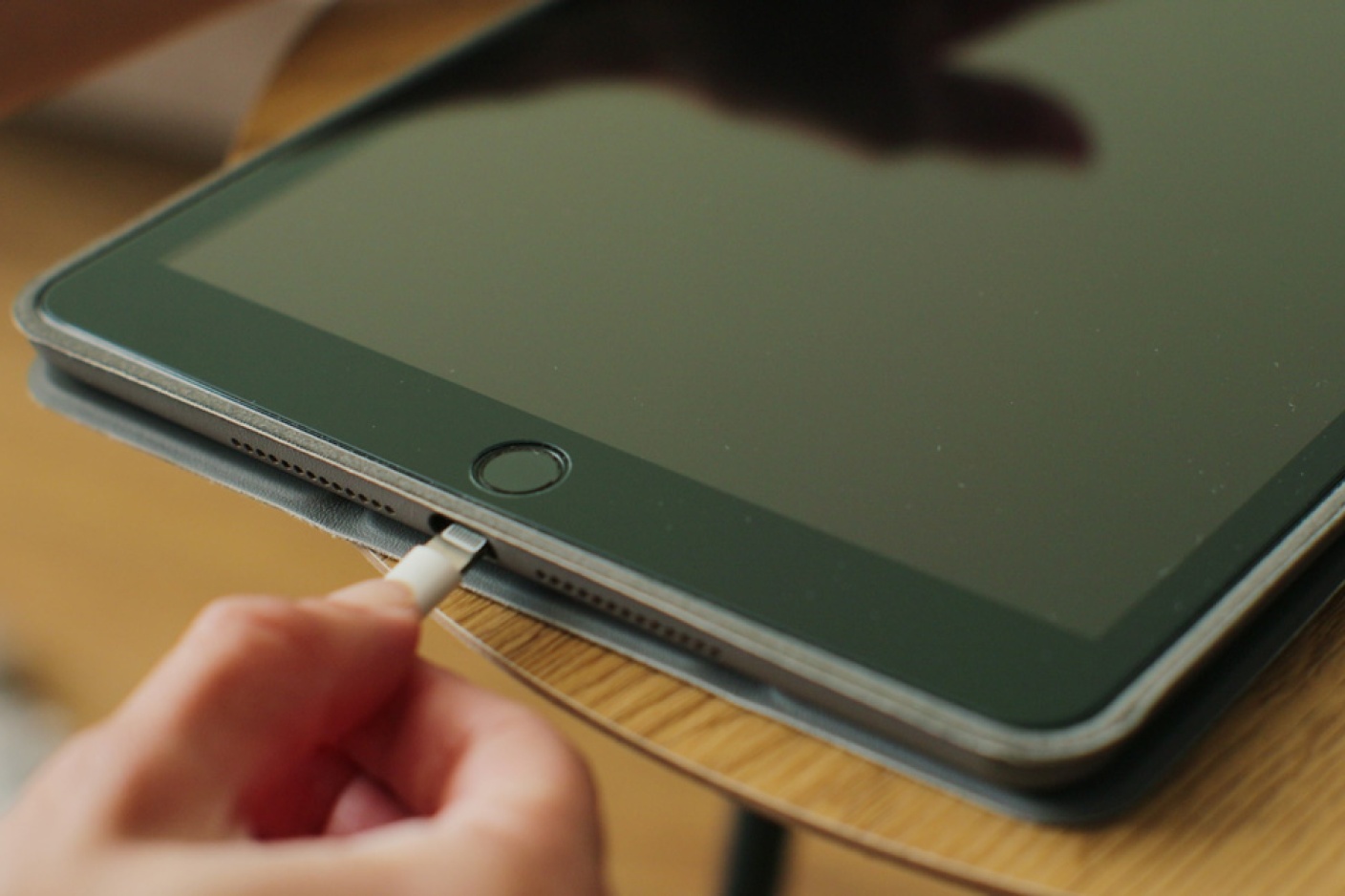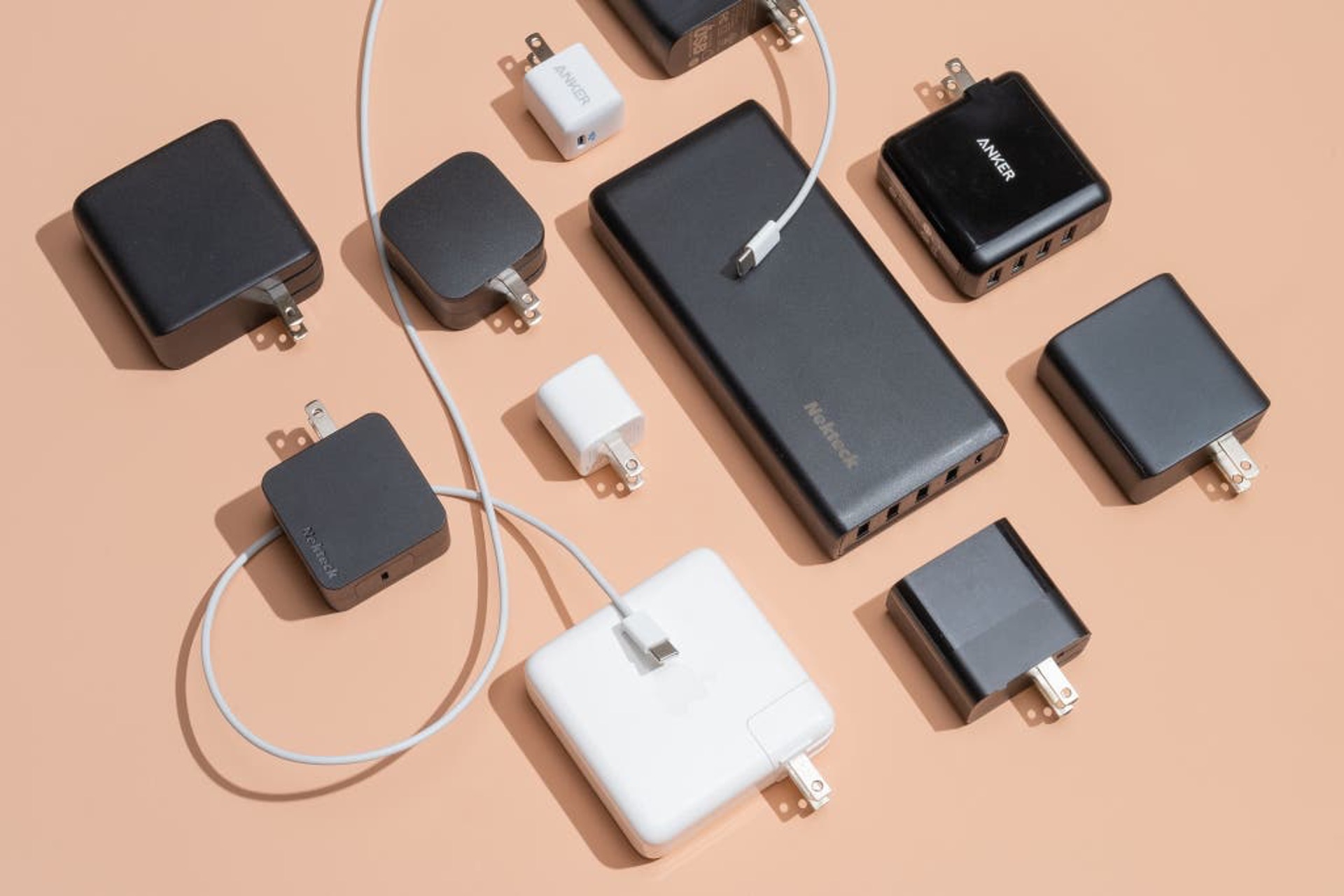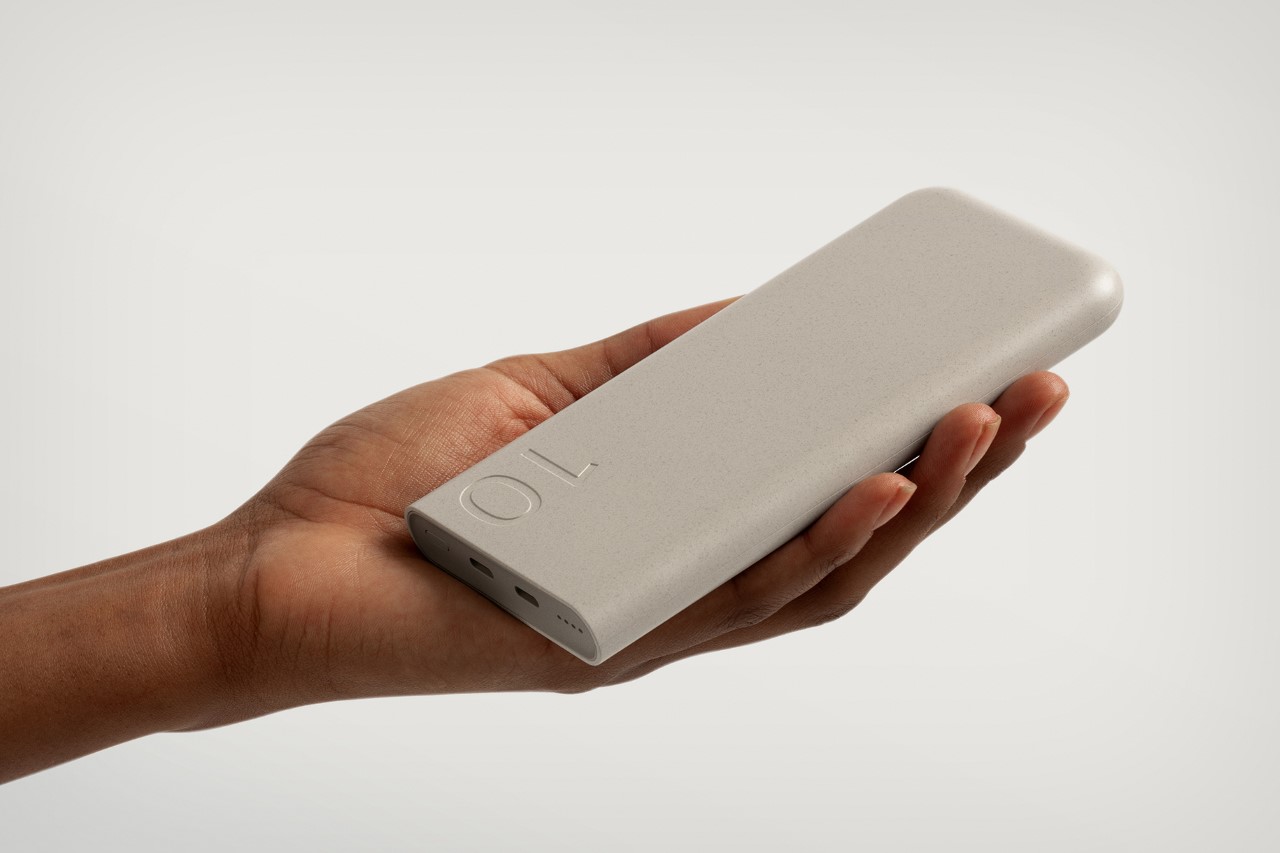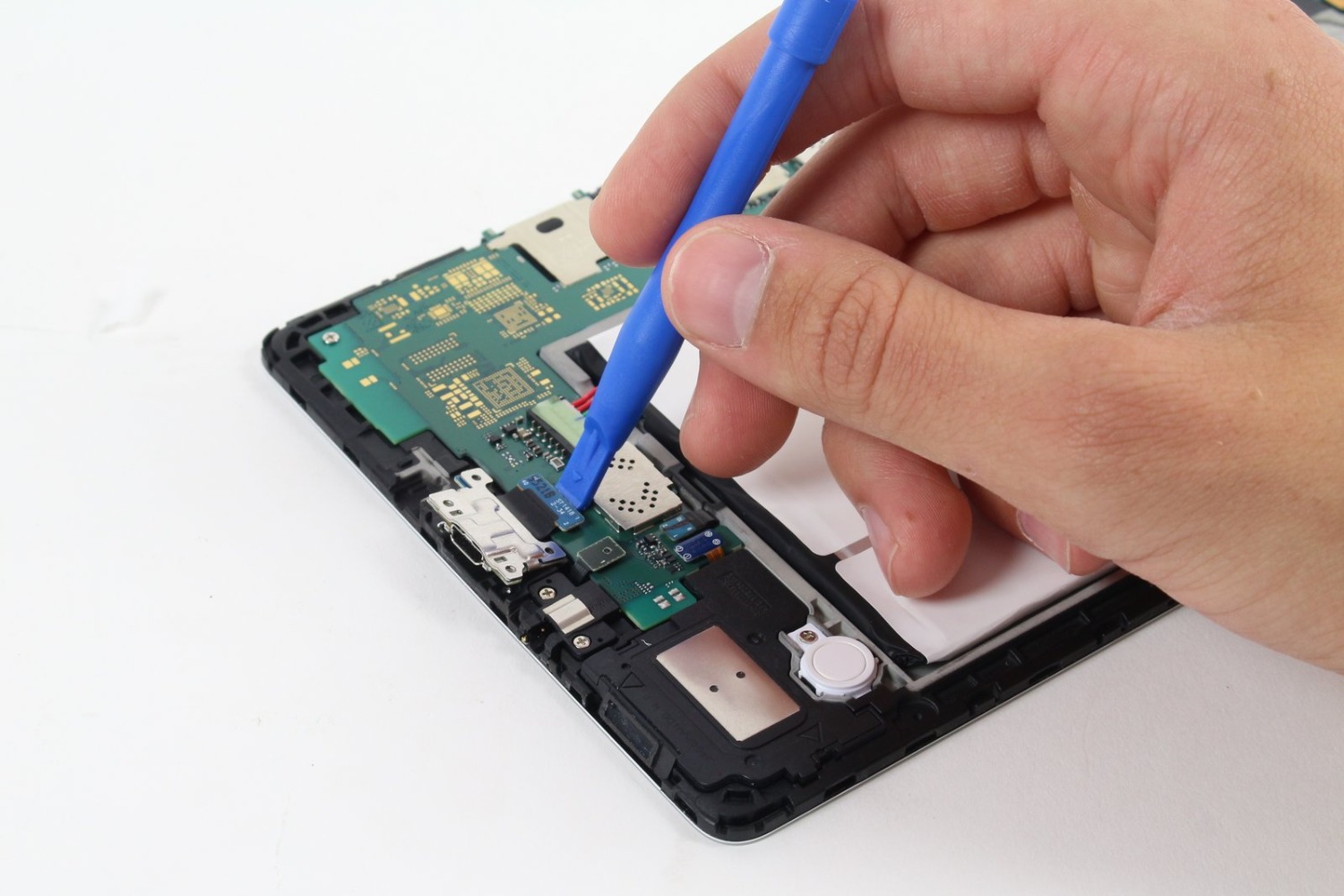Introduction
Charging our tablets is a necessary part of our daily routine, but what happens when we find ourselves without a charger? Whether we misplaced it, forgot it at home, or are in a situation where access to a conventional charger is not possible, there are alternative methods to power up our tablets. In this article, we will explore various methods to charge a tablet without a charger.
Losing access to a charger can be frustrating, especially when we rely heavily on our tablets for work, entertainment, and communication. However, with a bit of creativity and resourcefulness, we can find viable solutions to keep our tablets charged and operational in times of need.
Consider this article as your guide to alternative charging methods that can be used as a temporary solution until a proper charger is obtained. Please note that these methods may not be as efficient as using the original charger, but they can provide a temporary power source to keep your tablet functional until another solution is available.
Before we delve into the various methods of charging a tablet without a charger, let’s ensure that we take a moment to prioritize safety. When dealing with alternative charging methods, it’s important to follow instructions carefully, as well as use certified and reliable accessories to prevent any potential damage to your tablet or harm to yourself.
Now, let’s explore the different methods you can use to recharge your tablet without a charger. From utilizing USB cables and computers to harnessing solar power and creative DIY solutions, these methods will provide you with options to keep your tablet powered up in various situations.
Method 1: Using a USB Cable and Computer
One of the simplest methods to charge a tablet without a charger is by using a USB cable and a computer. Most tablets come with a USB cable for connecting to a computer, and this can serve as an alternative charging option in a pinch.
To begin, locate the USB port on your computer. This is usually found on the front or back of the computer tower. Connect one end of the USB cable to the USB port on your computer and the other end to your tablet’s charging port. Make sure the connection is secure.
Once the cable is connected, your tablet will start charging from the computer’s power source. It’s important to note that charging via this method may take longer compared to using an original charger, as the power output from a computer’s USB port is typically lower. However, it is a convenient solution when you don’t have access to a charger.
It’s worth mentioning that some computers may not provide enough power through the USB port to charge a tablet. If you encounter this issue, you can try using a different USB port on your computer or connect the tablet to a powered USB hub, which can provide more charging power.
This method is especially useful when you are traveling and have access to a computer but forgot to bring your tablet charger. Just make sure to have the USB cable handy, and you’ll be able to charge your tablet and keep it running until you can find a proper charger.
Remember, using a USB cable and computer to charge your tablet is a temporary solution and may not provide the fastest charging speed. It’s recommended to use the original charger whenever possible for optimal charging performance.
Method 2: Utilizing a Power Bank
When your tablet’s battery is running low and you don’t have access to a charger, a power bank can be a lifesaver. A power bank is a portable device that stores electrical energy which can be used to charge electronic devices on the go. It acts as an external battery for your tablet, providing a convenient and reliable charging solution.
To utilize a power bank, begin by ensuring that it is fully charged. Connect one end of the USB cable to the power bank’s output port and the other end to your tablet’s charging port. Once the connection is made, the power bank will start supplying power to your tablet, effectively charging its battery.
Power banks are available in various capacities, indicated by mAh (milliampere-hours). The higher the mAh rating, the more power the power bank can store, allowing for multiple charges of your tablet. It’s advisable to choose a power bank with a capacity suitable for your tablet’s battery size.
Keep in mind that charging your tablet with a power bank may take longer compared to using a conventional charger. This is because power banks typically have lower charging speeds. Additionally, some power banks may not be compatible with all tablet models, so it’s essential to check the specifications of the power bank and ensure compatibility with your tablet.
One advantage of using a power bank is its portability. You can carry it in your bag or pocket, making it convenient for situations where a charger is not readily available. Power banks also come with multiple USB ports, allowing you to charge multiple devices simultaneously, including smartphones, smartwatches, and other small electronics.
Using a power bank as an alternative charging method provides you with the flexibility to charge your tablet on the go, whether you’re traveling, in a remote location, or even during power outages. It’s a reliable solution that ensures your tablet remains powered up and accessible whenever you need it.
Method 3: Using a Car Charger
If you find yourself without a traditional charger for your tablet, utilizing a car charger can be a practical and convenient solution. A car charger allows you to charge your tablet using the power source in your vehicle, making it an ideal method when you are on the move or away from a standard electrical outlet.
To charge your tablet using a car charger, start by locating the car charger port in your vehicle. It is usually found in the front console area or on the dashboard. Insert the car charger into the port and ensure it is securely connected.
Next, connect the other end of the car charger, which typically has a USB port, to your tablet’s charging port using a USB cable. Once the connection is established, your tablet will start charging from the car’s power source.
It’s important to note that car chargers come with different power output capacities. Some car chargers provide higher charging speeds, while others may have lower output. If you have the option, choose a car charger that offers higher charging speed to reduce the charging time for your tablet.
Using a car charger to charge your tablet is especially convenient during long road trips or when you are constantly on the go. This method allows you to keep your tablet powered up, ensuring you have entertainment, communication, and productivity at hand wherever your journey takes you.
While using a car charger may not provide the same charging speed as a traditional charger, it can still effectively charge your tablet’s battery. Just make sure to unplug the charger from the car’s port once your tablet is fully charged to avoid draining your vehicle’s battery unnecessarily.
Car chargers are widely available and can be purchased at electronics stores, online retailers, or even automotive stores. It’s a worthwhile investment for those who frequently rely on their tablets while on the road.
Method 4: Employing a Solar Charger
In situations where access to traditional power sources is limited or unavailable, harnessing the power of the sun through a solar charger is a sustainable and environmentally friendly option to charge your tablet. Solar chargers are portable devices that convert sunlight into electrical energy, allowing you to charge your tablet wherever you have access to sunlight.
To utilize a solar charger, begin by ensuring that it is charged. Most solar chargers have built-in batteries that store the solar energy, so it’s recommended to fully charge the solar charger prior to use. Place the solar charger in direct sunlight, either outside or near a window with ample sunlight exposure.
Connect your tablet to the solar charger using a compatible USB cable. The solar charger will transfer the converted solar energy to your tablet’s battery, effectively charging it. It’s important to position the solar panels towards the sun to maximize energy absorption and charging efficiency.
Solar chargers come in various shapes and sizes, with different solar panel capacities. Keep in mind that the charging speed may vary depending on the size of the solar panels and the intensity of sunlight. It’s worth noting that charging your tablet using a solar charger may take longer compared to using a conventional charger, especially on cloudy days or during low sunlight conditions.
One advantage of employing a solar charger is its versatility. You can use it not only to charge your tablet but also to power other small electronic devices, such as smartphones, cameras, or portable speakers. Solar chargers are particularly beneficial for outdoor activities like camping, hiking, or traveling to remote areas where electricity is scarce.
When purchasing a solar charger, opt for a reputable brand that offers high conversion efficiency and built-in safety features to protect your tablet from overcharging or voltage fluctuations. Consider choosing a solar charger with a higher wattage and larger solar panels for faster charging speeds.
By utilizing a solar charger, you are taking advantage of renewable energy and reducing your carbon footprint. It’s an eco-friendly and reliable method to keep your tablet charged and ready to use, regardless of your geographical location or access to traditional power sources.
Method 5: Charging via Wireless Charging Pad
If your tablet supports wireless charging technology, you can take advantage of a wireless charging pad to conveniently power up your device without the need for cables or a traditional charger. Wireless charging pads use electromagnetic fields to transfer energy from the pad to the tablet, providing a hassle-free charging experience.
To charge your tablet using a wireless charging pad, start by ensuring that both the charging pad and your tablet are compatible with the Qi wireless charging standard. Qi is a widely adopted wireless charging standard, ensuring compatibility across various devices.
Place your tablet on the wireless charging pad, ensuring that the tablet’s charging coils align with the coils on the charging pad. Once properly aligned, the charging pad will start transferring energy to your tablet, effectively charging its battery.
It’s worth noting that wireless charging pads may have different charging speeds compared to traditional chargers. Some wireless charging pads offer fast-charging capabilities, while others may have slower charging speeds. If quick charging is a priority for you, consider choosing a wireless charging pad that supports fast charging technology.
The convenience of wireless charging pads extends beyond their ease of use. They eliminate the need for dealing with tangled cables or constantly plugging and unplugging chargers. With a wireless charging pad, you can simply place your tablet on the pad whenever it needs charging, making it convenient for frequent charging scenarios.
Keep in mind that wireless charging pads require a power source to function. They typically come with a USB cable that needs to be connected to a power outlet or a USB port on a computer. Ensure that the charging pad is connected to a power source to enable the wireless charging functionality.
Wireless charging pads are becoming increasingly popular and are readily available in the market. They come in different shapes, sizes, and designs, allowing you to choose one that suits your preferences and matches your tablet’s aesthetics.
By utilizing a wireless charging pad, you can keep your tablet charged without the hassle of dealing with cables and chargers. It adds convenience to your charging routine and ensures that your tablet’s battery remains topped up whenever you need it, whether at home, in the office, or during your travels.
Method 6: Utilizing an AC Adapter from Another Device
When you don’t have access to your tablet charger, another option is to use an AC adapter from another compatible device. Many electronic devices, such as smartphones, e-readers, or even some digital cameras, often come with AC adapters that have a USB output. These adapters can be used to charge your tablet, provided they have the appropriate voltage and current output.
To utilize an AC adapter from another device, begin by identifying an adapter that has a USB output and is compatible with your tablet’s charging port. Ensure that the voltage and current output of the adapter match the requirements of your tablet. You can usually find this information on the adapter itself or in the device’s manual.
Once you have the compatible AC adapter, connect one end of the USB cable to the USB output of the adapter and the other end to your tablet’s charging port. Ensure that the connection is secure.
Plug the AC adapter into a power outlet. The adapter will convert the AC power from the outlet into DC power required by your tablet, effectively charging its battery. It’s important to note that the charging speed may vary depending on the output capacity of the adapter.
Using an AC adapter from another device is a practical solution when you don’t have access to your tablet charger but have other electronic devices with compatible adapters. This method allows you to repurpose the adapter to charge your tablet and keep it powered up.
However, it’s crucial to ensure that the voltage and current output of the adapter are suitable for your tablet. Using an adapter with inappropriate specifications may result in slow charging, damage to the tablet’s battery, or even pose a safety risk. If you are unsure about the compatibility, it’s recommended to consult the device’s manual or seek professional advice.
Remember, this method should be used as a temporary solution until you can acquire a proper charger for your tablet. It’s always advisable to use the original charger whenever possible for optimal charging performance and to prevent any potential damage to your tablet’s battery.
Method 7: Using an Emergency Phone Charger
In situations where you don’t have access to a tablet charger, but you do have an emergency phone charger, you can utilize it as an alternative charging method for your tablet. Emergency phone chargers are portable devices designed to provide power to smartphones in emergency situations, and they can also be used to charge tablets.
To use an emergency phone charger for your tablet, start by ensuring that the charger has a USB output port and a compatible USB cable. Connect one end of the USB cable to the charger’s output port and the other end to your tablet’s charging port. Ensure that the connection is secure.
Once the cable is connected, turn on the emergency charger if it has an on/off switch. The charger will start supplying power to your tablet, effectively charging its battery. It’s important to note that the charging speed may vary depending on the charger’s capacity.
Emergency phone chargers can be powered through various methods, including built-in batteries, hand-cranking, or solar panels. Depending on the type of charger you have, the charging time and capacity may vary. It’s advisable to fully charge the emergency charger before using it to ensure maximum power output.
Using an emergency phone charger is a practical solution when you are in a situation where conventional chargers are not available. They are compact, portable, and can be a life-saver in emergency scenarios.
While emergency phone chargers are designed for smartphones, they can also charge tablets with compatible USB cables. However, it’s important to note that the charging speed may be slower compared to using a traditional tablet charger, as these chargers are typically designed with lower power outputs. Additionally, the capacity of such chargers may vary, so it’s important to manage your tablet’s battery usage accordingly.
Emergency phone chargers are readily available in electronics stores, online retailers, and even in some emergency preparedness kits. They are a useful addition to your emergency supplies and can provide a temporary power source for your tablet in times of need.
Remember, while emergency phone chargers can serve as a temporary solution, it’s always recommended to use the original charger for your tablet whenever possible for optimal charging performance.
Method 8: Charging through a Portable Generator
When you find yourself without access to a traditional power source, a portable generator can be a reliable option to charge your tablet. Portable generators are compact devices that convert fuel or solar energy into electrical power, allowing you to charge various electronic devices on the go, including your tablet.
To charge your tablet using a portable generator, start by ensuring that you have a generator that provides sufficient power output and is compatible with your tablet’s charging needs. Most portable generators come with AC outlets or USB ports that can be used to connect your tablet.
Depending on the type of generator, connect your tablet’s charger to either the AC outlet using a compatible cable or directly to the USB port, if available. Ensure that the connection is secure.
After connecting your tablet, start the portable generator and allow it to generate electrical power. Your tablet will start charging from the generator’s power source. It’s important to keep in mind that the charging speed may vary depending on the output capacity of the generator.
Portable generators offer flexibility and can be used in various situations, such as camping trips, outdoor events, or during power outages. They are designed to provide temporary power when conventional power sources are not available.
It’s important to note that portable generators utilize different fuel sources, including gasoline, propane, or even solar energy. It’s recommended to familiarize yourself with the specific type of generator you have and how to safely operate it based on the manufacturer’s guidelines. Always ensure proper ventilation and adhere to safety precautions to prevent any accidents or hazards.
When using a portable generator to charge your tablet, be mindful of managing your tablet’s battery usage to maximize the charging efficiency. Additionally, portable generators can be noisy, so it may be necessary to consider noise reduction measures, particularly in quiet environments.
Portable generators are available in different sizes and power outputs, so you can choose one that suits your charging needs. It’s advisable to select a generator with sufficient power capacity to ensure it can adequately charge your tablet without straining the generator’s capabilities.
By utilizing a portable generator, you gain the advantage of having a mobile power source for your tablet in situations where traditional power sources are limited or inaccessible. It ensures that your tablet remains functional and allows you to stay connected even in challenging circumstances.
Method 9: Utilizing a Hand-Crank Charger
When you find yourself without access to electricity or any other traditional charging methods, a hand-crank charger can come to the rescue. A hand-crank charger is a portable device that generates electrical power by manually rotating a crank, effectively charging your tablet and other electronic devices.
To utilize a hand-crank charger, start by locating the USB port on the device. This is typically where you’ll connect your tablet’s charging cable. Once you’ve connected the cable, ensure that the connection is secure.
Hold the hand-crank charger with one hand and use your other hand to rotate the crank. The continuous hand-cranking motion will generate electrical power that is transferred to your tablet’s battery, allowing it to charge.
It’s important to note that the charging speed will depend on the efficiency of the hand-crank charger and the rate at which you rotate the crank. The process of manually generating power can be physically demanding, so it may take longer compared to other charging methods. However, it can be an effective option in emergency situations or when conventional charging methods are unavailable.
Hand-crank chargers often have additional features, such as built-in flashlights or radios, making them useful in various scenarios, including outdoor adventures, camping trips, or during power outages. They are compact and portable, allowing you to carry them easily in your backpack or emergency kit.
When selecting a hand-crank charger, consider factors like output capacity, build quality, and durability. Look for a charger that is compatible with your tablet and provides a stable power output. It’s also advantageous to choose a model with a battery backup feature, allowing you to store the generated power for later use.
Using a hand-crank charger requires patience and physical effort, but it offers independence from traditional power sources and provides a sustainable charging solution. By harnessing your own energy, you can keep your tablet powered up even in the most challenging situations.
Remember, hand-crank chargers may not provide the same level of convenience and charging speed as traditional methods, so it’s advisable to use them as a temporary solution until you can access a more efficient charging method.
Method 10: Making a DIY Charger at Home
When you’re in a pinch and don’t have access to any traditional charging methods, you have the option to create a DIY charger using simple household items. By repurposing existing materials, you can harness electrical power and charge your tablet without the need for a conventional charger. Here’s a simple DIY method you can try at home.
To create a DIY charger, you will need the following items:
- A 9-volt battery
- A USB cable with a connector that fits your tablet’s charging port
- A small piece of wire (around 3-4 inches)
First, cut off one end of the USB cable and expose the inner wires. You’ll typically find four colored wires: red, black, green, and white. Strip the insulation off the red and black wires, leaving about half an inch of bare wire.
Next, take the small piece of wire and strip both ends. Connect one end of the wire to the positive terminal (+) of the 9-volt battery. Twist the wire or use electrical tape to secure the connection. Attach the other end of the wire to the red wire of the USB cable, again securing the connection.
Repeat the process with the black wire of the USB cable, connecting it to the negative terminal (-) of the 9-volt battery.
If you have a mini-toggle switch, you can incorporate it into your DIY charger to control the power flow. Connect one of the remaining wires (green or white) from the USB cable to one terminal of the switch. Connect the other terminal of the switch to the corresponding wire on the 9-volt battery (green to positive, white to negative). This way, you can easily turn the charger on and off.
Once all the connections are made, plug the USB cable into your tablet’s charging port. The 9-volt battery will provide the electrical power needed to charge your tablet’s battery.
It’s important to note that this DIY charger may not provide the same charging speed or efficiency as a traditional charger. Additionally, the voltage output from a 9-volt battery may not be ideal for all tablets. Therefore, it’s crucial to exercise caution and monitor the charging process to prevent any potential damage to your tablet.
Creating a DIY charger at home is a temporary solution and should be used when no other charging options are available. It’s always recommended to use the original charger provided with your tablet for optimal charging performance and to ensure your tablet’s safety.
Remember, this DIY method requires basic electrical knowledge and understanding. If you are unsure about working with wires and batteries, it’s best to seek assistance from someone with experience or consult a professional to ensure safety precautions are observed.
Conclusion
In situations where you find yourself without a charger for your tablet, there are various alternative methods to keep your device powered up. From using a USB cable and computer to utilizing a power bank, car charger, solar charger, wireless charging pad, AC adapter from another device, emergency phone charger, portable generator, hand-crank charger, or even creating a DIY charger at home, each method offers a unique solution to charge your tablet in different circumstances.
While these alternative methods may not provide the same charging speed and efficiency as a traditional charger, they can serve as temporary solutions to keep your tablet running until you can obtain a proper charger. It’s important to prioritize safety when using alternative charging methods, following instructions carefully and using certified and reliable accessories to prevent any potential damage to your tablet or harm to yourself.
When using any of these methods, it’s essential to be mindful of the charging speed, compatibility, and any specific requirements of your tablet. Additionally, consider factors such as portability, convenience, and available power sources when choosing an alternative charging method that suits your needs.
Remember, the original charger provided with your tablet is always the recommended option for optimal charging performance. While alternative methods might be useful in emergencies or temporary situations, it’s important to obtain a proper charger as soon as possible for long-term use.
By exploring and understanding these alternative methods, you now have a range of options to keep your tablet charged and functional when faced with unexpected situations. Whether you’re on the go, in a remote location, or during power outages, these methods provide flexibility and convenience to ensure your tablet remains a reliable tool for work, entertainment, and communication.
Always stay prepared and consider having a backup charger or alternative power sources available, especially during critical times when access to traditional charging methods may be limited. With a little creativity, resourcefulness, and the right knowledge, you can overcome charging obstacles and enjoy the uninterrupted use of your tablet in any situation.







